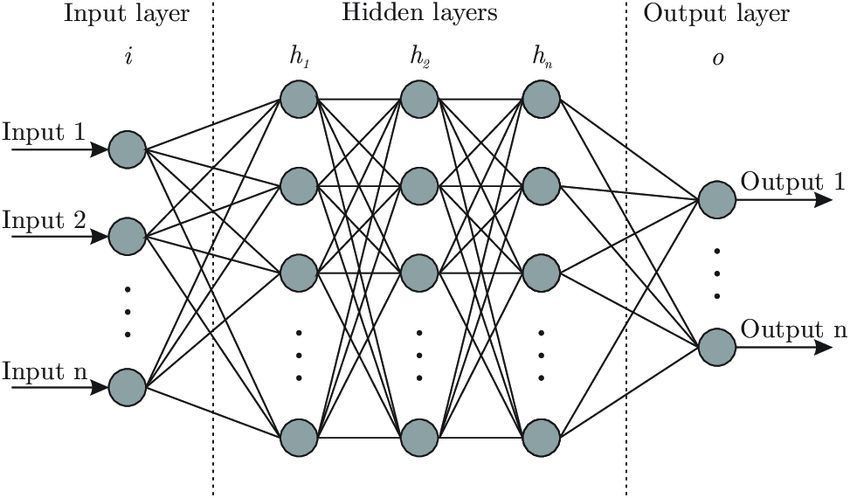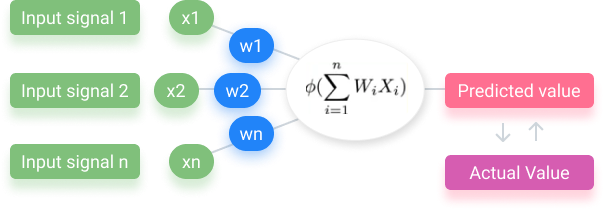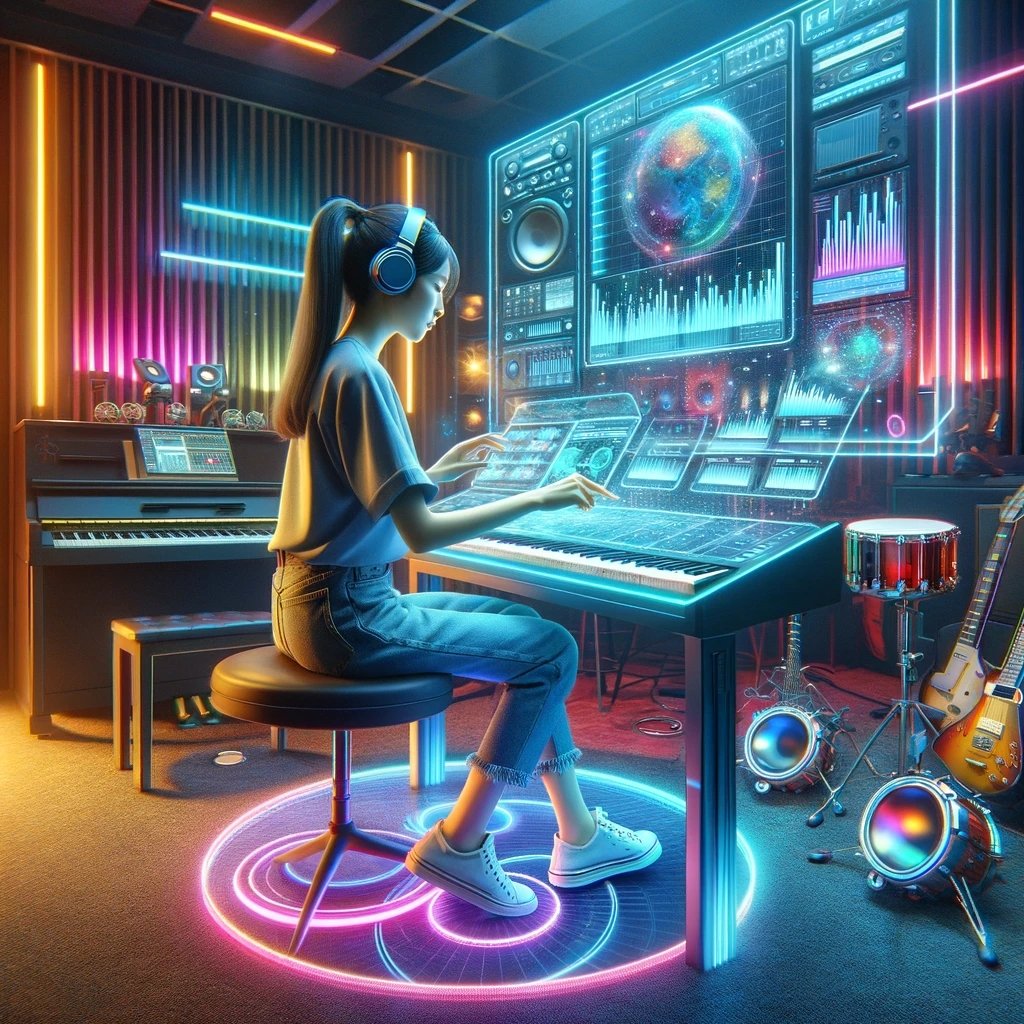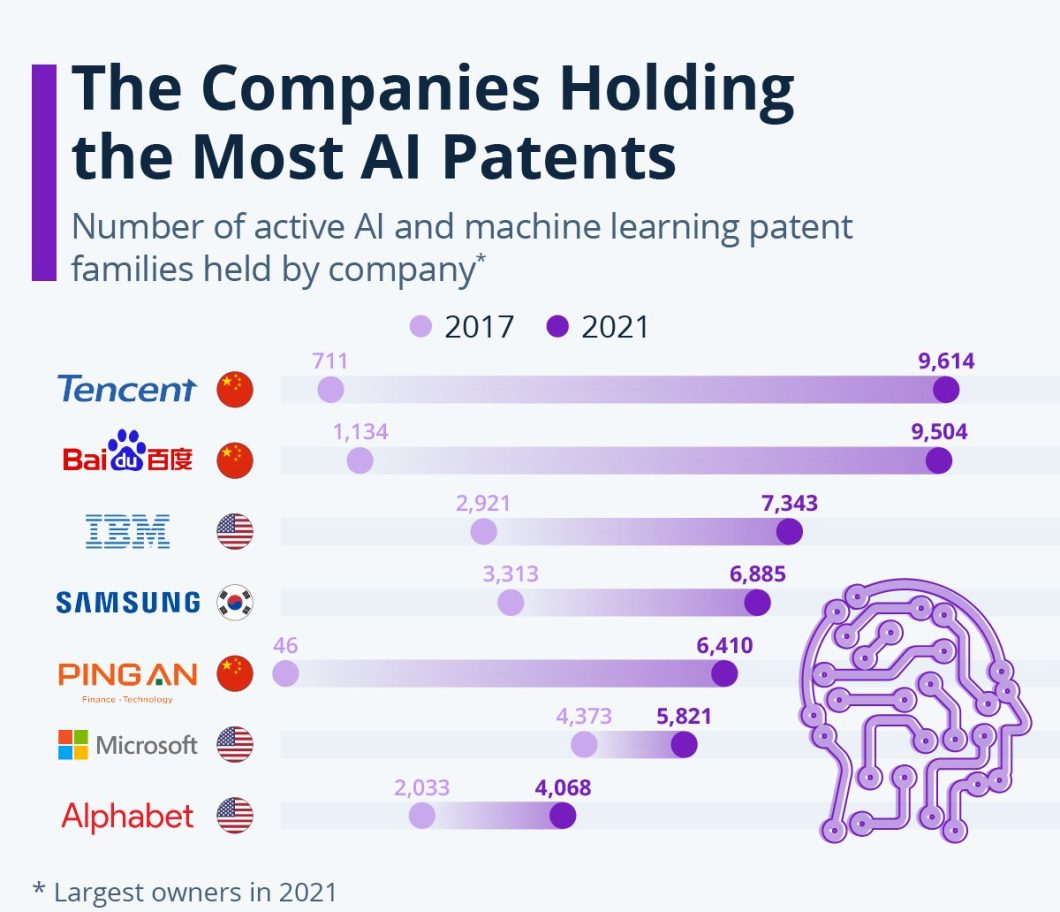Artificial Neural Networks (ANNs) are the cornerstone of modern artificial intelligence (AI). They mimic the human brain’s structure, with layers of nodes or “neurons” to process data non-linearly. This enables ANNs to learn and make intelligent decisions based on input data.
A common use case is image recognition and object detection, such as distinguishing between cats and dogs. The ANN processes the input image through various layers, classifying it based on characteristics like shapes or textures. However, ANNs can also process other forms of content, like music, by analyzing relevant patterns.

Technically, ANNs differ significantly from traditional software. Traditional AI software operates based on predefined, linear rules and algorithms explicitly programmed by humans. In contrast, ANNs learn and adjust their internal parameters (weights and biases) through exposure to data, effectively ‘teaching’ themselves.
This learning process is both iterative and dynamic. It allows the ANN to develop complex patterns and decision-making abilities that aren’t explicitly programmed.

The validity of this distinction lies at the heart of a recent court case. The debate focused on whether ANNs should be subject to the same copyright laws as conventional code. The answer holds immense importance for how we think about AIs as well as intellectual property protection. This is especially true of the emergent qualities of AI systems and AI-generated works.
This largely rests on whether we believe ANNs merely execute code provided by humans. Or whether it actually “creates” its operations through learning and adjusting its internal structure.
Unlike goods or services, AIs themselves have the power of invention. This raises many questions regarding the type of IP protection they (and their inventors) should enjoy.
Case Background: Emotional Perception AI Ltd v. Comptroller-General of Patents
The case revolves around an innovative application of Artificial Neural Networks (ANNs) regarding music recommendation. In particular, the combination of AI emotion or sentiment analysis with music recommendation.
Emotional Perception AI Ltd’s AI is capable of recommending music by analyzing its emotional and perceptual qualities. Most conventional AI-powered tools only use genre or artist as relevant factors in their training data. This ANN’s training involves understanding and categorizing music based on human perceptions and emotions. Emotional Perception AI Ltd argues that this is going a step beyond conventional categorization.
The ANN utilizes a pair of music files, each with a natural language description, such as ‘happy’ or ‘sad.’ It uses natural language processing (NLP) for the descriptions, allowing the ANN to develop a semantic understanding. It then recommends music tracks with shared emotional qualities based on this understanding.
This makes it distinct from most music recommendation AIs, which rely almost solely on music genres.
The UK Patent Office rejected the initial patent application for this technology. The primary reason was that the court still considers ANNs to be a “program for a computer.” According to the Patents Act 1977 section 1(2)(c), a computer program is not a patentable invention.
The Patent Office argued that suggesting music based on feelings and perception is not a “technical contribution.” The music files recommended by the ANN were more about personal preference and thinking rather than technical aspects.
Emotional Perception AI appealed this decision, which led to the case being transferred to the High Court of England and Wales.
The High Court’s Ruling and Rationale
The High Court’s decision marks a significant development in the understanding of AI (intellectual property) IP Protection. The overturning of the initial decision fundamentally redefines the interpretation of a patentable invention. And changing the basis for how copyrights protect AI inventions and trade secrets.
The crux of the ruling lies in distinguishing between ANNs and traditional computer programs. While presiding over the case, Sir Anthony Mann emphasized that ANNs operate on a fundamentally different level than standard software.
A key point was that while the framework of an ANN might be initially programmed by humans, its actual operation – the learning, adapting, and decision-making processes – developed autonomously through training. This autonomous development of operational methods signals a significant departure from traditional software, which strictly follows predefined, human-written code.
The court argued that this self-evolving nature of ANNs places them outside of being merely a “program for a computer.”
Further, the court delved into the significance of the technical contribution made by the ANN. It was argued that the music recommendations made by the ANN were not just of an abstract, non-technical nature but had a real, technical effect.
It bases its recommendations on a sophisticated understanding of human emotional and perceptual responses. This goes beyond mere subjective interpretation as it involves a technically complex process of data analysis and AI pattern recognition. These “skills” are integral to AI systems like ANNs.
In short, the court affirmed the ANN’s operations as technical contributions to the field. Not just as a result of its human-provided source code but as an emergent quality of the ANN itself. This opens the door to patentability – Emotional Perception AI’s original goal. It also sets a precedent for future AI systems to qualify for IP Protection.
AI IP Protection Implications of the Ruling for AI IP Protection
The High Court’s ruling has significant implications for the future of IP protection in the field of AI. This landmark decision could pave the way for a more inclusive approach towards patenting AI algorithms, particularly ANNs.
Crucially, it distinguishes between machine learning systems, like ANNs, and traditional software. Traditional software operates on fixed algorithms directly coded by programmers. However, machine learning systems evolve and adapt their functions autonomously.
Developers can’t always predict the outcomes of machine learning or deep learning, effectively making it an independent discovery.
This dynamic quality challenges the traditional notions of what constitutes a patentable invention. This ruling could encourage more AI innovators to seek IP Protection.
In turn, this could lead to a surge in patents for AI-based technologies. It could also lead to a boom in innovation. Future developers will know that intellectual property laws will protect their creations.
However, the ruling has not completely resolved all issues surrounding the patentability of AI technologies. There is still the issue of “mathematical methods.” Traditionally, mathematical methods are not patentable as they are considered abstract ideas.
This is because some consider them to be fundamental truths that exist independently of any human action. Patenting them could lead to the monopolization of basic tools of scientific and technological work.
The court’s decision did not fully address whether another court could categorize ANNs under this non-patentable umbrella.
The Landscape of Patentization of AI
The evolving landscape of AI IP protection presents a mix of challenges and opportunities.
Challenges
- Defining Inventorship: Determining the true ‘inventor’ in AI-generated inventions can be complex. For example, if an AI develops a new medicinal drug, who is truly the inventor?
- Overly Broad Patents: There’s a risk of granting patents for AI applications that are too broad. Broad copyright works could stifle innovation and competition.
- Evolving AI: The continuous learning and adaptation of AI systems can make it difficult to keep track of new patents.
Opportunities
- Stimulating Innovation: Recognizing AI inventions in patent law could incentivize research and development in AI.
- Commercialization: Patent protection can provide a pathway for monetizing AI innovations, thus encouraging investment.
- Setting Standards: Establishing clear guidelines for AI patentability can help set industry standards and drive technological advancements forward.

Global Comparison and Legal Perspectives
Globally, there’s a diverse landscape regarding AI and IP protection. The USPTO has been relatively open to AI-related patents in the United States. However, they must meet standard patent criteria like novelty and non-obviousness. However, like the UK, the US does not recognize AI as an inventor.
In contrast, Russia and Germany have more stringent approaches. Russia maintains strict requirements for human inventorship. Germany emphasizes the technical application of AI inventions rather than abstract AI algorithms.
India is still in the early stages of developing its AI patent framework. So, it tends to align with global standards. Patent criteria also rely on the role of the human inventor and technical applicability.
The European Patent Office (EPO) also does not recognize AI as an inventor. However, it allows AI-related inventions if they solve a technical problem.
Statistics show an increasing trend in AI patent applications globally. Over the 5 years between 2017-2021, AI patent grants grew on average by 18.2% per year. According to an article published in 2023 by Statista, some of the world’s largest tech companies are also the world’s largest AI copyright owners.

For example, Tencent holds 9,600+ patents, IBM has 7,300+, Samsung has 6,700+, and Microsoft has 5,800+ patents. Most companies developed the vast majority of their patents in the last five years alone.
The Debate: Should AI Algorithms be Patentable?
AI IP protection is a topic of intense debate among experts, with arguments both for and against it.
Arguments for Patentability
- Stimulating Innovation: Dave Johnson, Chief Data and Artificial Intelligence Officer at Moderna, who highlighted the role of AI in developing the COVID-19 vaccine, suggests that patent protection encourages innovation in crucial areas like healthcare.
- National Security: Andrei Iancu, former Director of the US Patent and Trademark Office, argues that modernizing patent law to include AI is crucial for national security.
- Global Competitiveness: Recognizing AI inventions for IP protection is essential for economic growth and staying globally competitive. This is according to Christian Hannon, a patent attorney at the USPTO.
Arguments Against Patentability
- Abstract Nature of Algorithms: Since algorithms are abstract ideas, there’s a concern that they do not qualify for patentability. It’s especially difficult to pinpoint the novelty or non-obvious nature of AI inventions.
- Inventorship Issues: The debate extends to whether we should recognize AI systems themselves as inventors. Current laws don’t recognize non-human entities as inventors. This poses a challenge in cases where AI significantly contributes to or creates an invention.
Overall, there seems to be a consensus on the need for robust IP rights for AI to sustain innovation. However, the practicalities and implications of patenting AI algorithms remain complex and multifaceted. With AI slowly making its way into every facet of our lives, these battles should be of immense public interest.
Entities like the World Intellectual Property Organization (WIPO) will be a driving force in adopting and standardizing these types of intellectual property related to AIs.
More on Ethics in AI
- The role of Synthetic Data and its use cases
- What happened with Sam Altman and OpenAI?
- Computer vision influencers to keep an eye on
- A full rundown of AI at the edge
